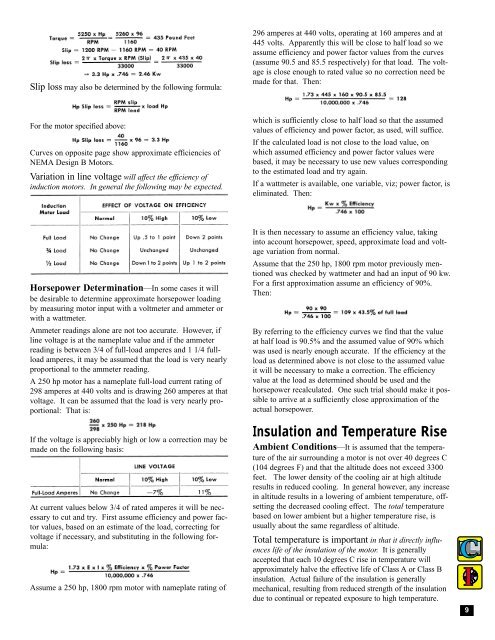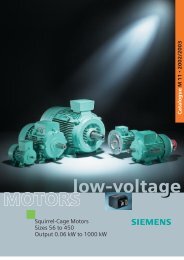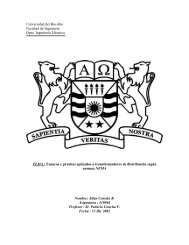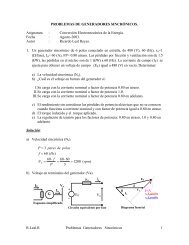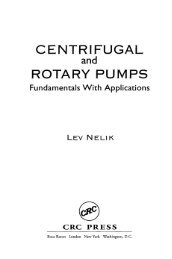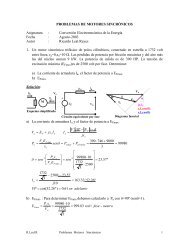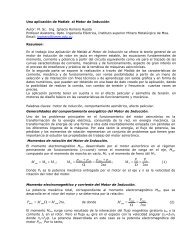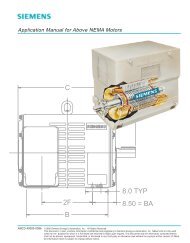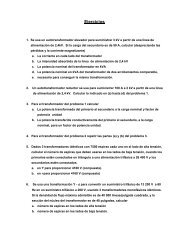Induction Motors
Induction Motors
Induction Motors
Create successful ePaper yourself
Turn your PDF publications into a flip-book with our unique Google optimized e-Paper software.
Slip loss may also be determined by the following formula:296 amperes at 440 volts, operating at 160 amperes and at445 volts. Apparently this will be close to half load so weassume efficiency and power factor values from the curves(assume 90.5 and 85.5 respectively) for that load. The voltageis close enough to rated value so no correction need bemade for that. Then:For the motor specified above:Curves on opposite page show approximate efficiencies ofNEMA Design B <strong>Motors</strong>.Variation in line voltage will affect the efficiency ofinduction motors. In general the following may be expected.which is sufficiently close to half load so that the assumedvalues of efficiency and power factor, as used, will suffice.If the calculated load is not close to the load value, onwhich assumed efficiency and power factor values werebased, it may be necessary to use new values correspondingto the estimated load and try again.If a wattmeter is available, one variable, viz; power factor, iseliminated. Then:Horsepower Determination—In some cases it willbe desirable to determine approximate horsepower loadingby measuring motor input with a voltmeter and ammeter orwith a wattmeter.Ammeter readings alone are not too accurate. However, ifline voltage is at the nameplate value and if the ammeterreading is between 3/4 of full-load amperes and 1 1/4 fullloadamperes, it may be assumed that the load is very nearlyproportional to the ammeter reading.A 250 hp motor has a nameplate full-load current rating of298 amperes at 440 volts and is drawing 260 amperes at thatvoltage. It can be assumed that the load is very nearly proportional:That is:If the voltage is appreciably high or low a correction may bemade on the following basis:At current values below 3/4 of rated amperes it will be necessaryto cut and try. First assume efficiency and power factorvalues, based on an estimate of the load, correcting forvoltage if necessary, and substituting in the following formula:Assume a 250 hp, 1800 rpm motor with nameplate rating ofIt is then necessary to assume an efficiency value, takinginto account horsepower, speed, approximate load and voltagevariation from normal.Assume that the 250 hp, 1800 rpm motor previously mentionedwas checked by wattmeter and had an input of 90 kw.For a first approximation assume an efficiency of 90%.Then:By referring to the efficiency curves we find that the valueat half load is 90.5% and the assumed value of 90% whichwas used is nearly enough accurate. If the efficiency at theload as determined above is not close to the assumed valueit will be necessary to make a correction. The efficiencyvalue at the load as determined should be used and thehorsepower recalculated. One such trial should make it possibleto arrive at a sufficiently close approximation of theactual horsepower.Insulation and Temperature RiseAmbient Conditions—It is assumed that the temperatureof the air surrounding a motor is not over 40 degrees C(104 degrees F) and that the altitude does not exceed 3300feet. The lower density of the cooling air at high altituderesults in reduced cooling. In general however, any increasein altitude results in a lowering of ambient temperature, offsettingthe decreased cooling effect. The total temperaturebased on lower ambient but a higher temperature rise, isusually about the same regardless of altitude.Total temperature is important in that it directly influenceslife of the insulation of the motor. It is generallyaccepted that each 10 degrees C rise in temperature willapproximately halve the effective life of Class A or Class Binsulation. Actual failure of the insulation is generallymechanical, resulting from reduced strength of the insulationdue to continual or repeated exposure to high temperature.9


